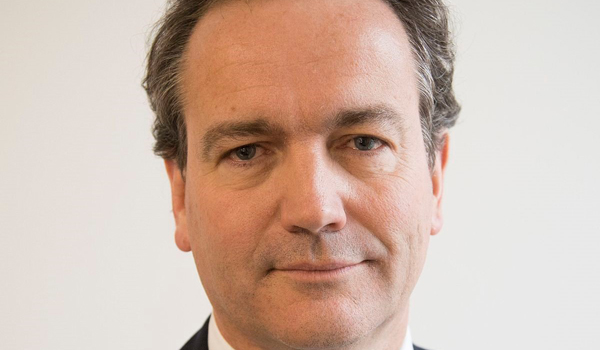IOPC and NPCC clash over review of Taser cases
The Independent Office for Police Conduct (IOPC) has warned that the police risks losing its legitimacy in the eyes of the public unless community concerns about the use of Taser are addressed.
In a review published today (August 25) the IOPC examined 101 of its investigations involving Taser use between 2015 and 2020.
The report makes 17 recommendations to the College of Policing, the National Police Chiefs’ Council (NPCC), the Association of Police and Crime Commissioners, and the Home Office seeking improvements to national guidance and training; scrutiny and monitoring of Taser use; and data and research.
The IOPC said that during the course of its review it had looked at existing data and research, and considered the views of a range of community groups and other stakeholders.
However, the NPCC lead for less lethal weapons, Chief Constable Lucy D’Orsi, was critical of its findings, describing the report as vague and lacking in detail, adding that it had not been built upon a substantive evidence base.
Ms D’Orsi said the IOPC had declined to take up the opportunity to attend a Taser training course or consult with national independent experts and “did not engage with policing” during the course of its investigations.
The report examined the cases of 108 people subjected to Taser use, 94 of whom had a Taser discharged against them. According to the IOPC, opportunities to de-escalate the situation were missed in around one third of the cases looked at. It also expressed concerns around incidents involving prolonged and multiple Taser discharges.
In 26 of the investigations, the IOPC found the officer involved may have behaved in a manner that would justify bringing disciplinary proceedings or making a referral to the Crown Prosecution Service.
Four inquests found the use of Taser in combination with other factors contributed to, or were relevant in, a person’s death while one case, that of West Mercia Police constable Benjamin Monk, resulted in a criminal trial where an officer was convicted of unlawful manslaughter.
IOPC Director General Michael Lockwood said: “There is no doubt that Tasers are a valuable tool for keeping both the public and police safe in dangerous circumstances.
“However, it is important there is ongoing independent scrutiny of Taser use so that both the police and the community can be assured they are being used appropriately. Clearer national guidance on the circumstances in which Taser should and should not be used and better training will improve officer safety, as well as give the public reassurance that Taser is being used only when absolutely necessary.
“Police forces must be able to justify to the public the circumstances in which Taser is deployed, particularly when children and vulnerable people are involved. Forces must also respond to the disproportionate use of Tasers against black people.”
Of those cases examined by the IOPC, 71 per cent of subjects were white, 22 per cent were black, less than four per cent were Asian and less than two per cent of mixed ethnicity. The average age of a subject was 35, but six people were aged under 18 at the time of the incident.
Mr Lockwood added: “Tasers are available to more officers than ever before. Our engagement with communities has highlighted a stark difference between their expectations about when a Taser should be used, and the situations in which Taser can be used under current national guidance, particularly on those who are vulnerable. Police forces must be able to explain this clearly or risk further eroding public confidence – it is a gap which must be closed.
“In particular, people from black, Asian and minority ethnic backgrounds deserve a clear and transparent answer from police on why such disproportionality still exists – failure to address this risks undermining the legitimacy of policing.
“We’d like to see communities more involved in decisions around the use of Taser – police and crime commissioners have an important role to play providing this assurance at a local level.
“Ultimately, policing has to change and be more responsive to community concern or risk losing legitimacy in the eyes of the public. These recommendations now sit with policing bodies and forces to act on.”
In a blog post written in response to the IOPC review, Ms D’Orsi wrote: “Scrutiny of the powers and responsibilities that police have to carry out our duties is critical to maintain the trust of communities. I am proud that the fundamental model of UK policing is one of consent and equally proud that we do so with a service which is only, on average, five per cent armed.
“Unfortunately, this report by the IOPC is vague, lacks detail, does not have a substantive evidence base and regrettably ignores extensive pieces of work that are already well underway and, indeed, other areas where improvement could be made.
“I advised the IOPC of my concerns and am extremely disappointed that it did not engage with policing, attend a Taser training course or consult the national independent experts who we work with whilst undertaking its initial research. Only 101 Taser uses over a five year period were reviewed and these were all ones that had been investigated by the IOPC. It is concerning that this only represents 0.1 per cent of all Taser uses in the same period, which totals 94,045.
“Focusing on these smaller number of cases missed an opportunity to consider Taser use more broadly and unfortunately has resulted in recommendations which are mostly out of date and not based on the realities of policing. The focus on such a small data set ignores good practice and learning elsewhere.
“I share the concerns from some of our communities about the disproportionate use of Taser on young black men, who we know are eight times more likely to have it used on them. We do not yet understand the reason for this and that’s why, for over a year and a half, we have been working with national independent advisors and the College of Policing to independently review this disproportionality.
“It is disheartening to see this work not being fully recognised by the IOPC. In fact, despite early support, the IOPC declined an opportunity to contribute to fund this independent work, chaired by Mr Junior Smart OBE and with a panel involving many eminent academics in the areas of policing, human rights, mental health, racism and police legitimacy and violence. This work will continue to be a priority for policing alongside our plan of action on inclusion and race, scrutinised by independent chair, barrister Abimbola Johnson.
“Our Taser training is one of the most comprehensive packages offered anywhere in the world but of course there is always the opportunity for improvement. In the last year officers attended 1.6 million violent incidents and dealt with most of them without a Taser ever being discharged. The mere presence of Taser resolves an incident without it being discharged in 86 per cent of the time. Policing is not easy and in many violent situations I believe Taser is a viable less lethal option for officers between using a baton and the lethal force of a gun. Taser has a critical place in protecting the public and our officers as a less lethal device.
“Officers are well trained to use the reasonable force given to them in law to confront the violence or threat of violence they are faced with when they protect the public and themselves. Rightly UK policing is highly scrutinised and as we have seen recently, when an officer acts outside of the law, they will be dealt with by the courts and face prison.
“Police officers come to work to protect their communities and take split second decisions to keep the public and themselves safe. We know that over 88 per cent of officers say they have been assaulted at some point in their career. I firmly believe most people are grateful they never have to make such challenging decisions in the course of their work.
“I recognise the points made by the IOPC about the use of Taser on children, and it has been a matter of concern for me long before this report. I have to question how practical it will ever be for officers to deduce if a person is 17 or 18 amid a violent and volatile situation where life could be at risk. I have again reiterated to the IOPC that the use of Taser on a child could be an automatic referral to them. It does remain of deep concern to me and my colleagues that some young people are involved in violence and carry dangerous weapons. There were 4,400 offences, involving weapons, committed by a person under the age of 18 between 2019 and 2020.
“As is normal practice we will continue to review and adapt our selection, training and operating procedures and we have already reflected on the draft report from the IOPC we received. Importantly we will do this with others both within and outside of policing and I continue to be grateful for this support and challenge. I would welcome the IOPC to experience our full training course.”
In its own press release to accompany publication of the report, the IOPC said had taken into account current research and that it welcomed the work being done by the NPCC and the College of Policing to understand and tackle the root causes of racial disproportionality in police use of Taser.
Mr Lockwood said: “I am also aware of the positive and proactive work being undertaken by the National Taser Stakeholder Advisory Group in this area. The College of Policing’s new conflict management guidelines and the proposed training are also welcome and are steps in the right direction.”
“The comments from the NPCC are extremely disappointing. Our review aims to contribute to the growing evidence base around Taser use, help develop a deeper understanding of the perceptions of community groups and stakeholders about Taser, and to improve public confidence in policing.
“We consulted extensively to help inform our recommendations, including within policing, and shared an early draft of our report. We would now ask the NPCC consider our review more closely and respond to our recommendations.”
The Association of Police and Crime Commissioners (APCC) said public engagement and scrutiny were key to tackling Taser concerns.
Responding to the IOPC report, Lisa Townsend, the APCC mental health and custody lead, said: “Today’s report identifies learning from some of the most serious and sensitive incidents involving Taser in recent years. But we must not forget, more typically, that simply the presence of a Taser is enough to de-escalate a dangerous situation and ensure no one comes to any harm. This is testament to the training and professionalism of policing in England and Wales and the core principle of policing by consent.
“Police officer safety is of critical importance to police and crime commissioners. We continue to work with and support our chief constables to ensure officers have the tools they need, including Taser, to keep themselves and the public safe. We also continue to act as a bridge between policing and the public to ensure concerns, particularly from those who are under-represented and disproportionately affected, are addressed.”







